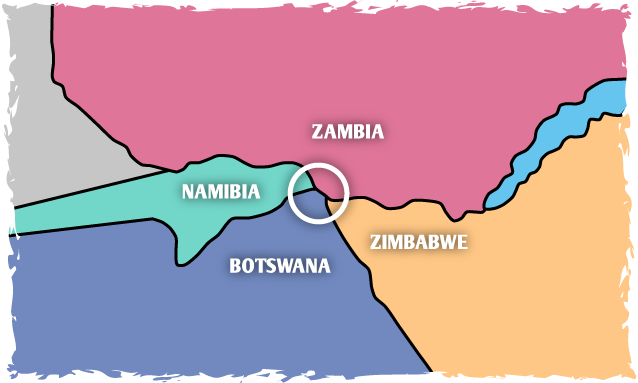On the southern edge of Africa, where Zambia and Zimbabwe meet, the mighty Zambezi River flows with an elegance that belies its power. Carving its way through valleys, plains, and gorges, the Zambezi is more than just a river—it is a lifeline, a landmark, and a living wonder. At its heart lies one of the most iconic natural spectacles in the world: Victoria Falls. Here, nature takes center stage, and the river becomes a shared treasure that binds two nations in awe-inspiring harmony.
A Natural Border with Unnatural Beauty
The Zambezi River acts as a natural boundary between Zambia and Zimbabwe for much of its lower course. But at Victoria Falls, it becomes something more—an international marvel. Many people in the area call Victoria Falls “Mosi-oa-Tunya,” which means “The Smoke That Thunders.” It is one of the world’s biggest rivers. It stretches more than 1.7 kilometers wide and drops over 100 meters into the Batoka Gorge below, creating an unrelenting roar and a mist so high it can be seen from miles away.
Visitors on both sides of the border marvel at the same view—curtains of cascading water crashing into the chasm below. Whether you approach from Zimbabwe’s Victoria Falls town or Zambia’s Livingstone, the sense of wonder is universal. The shared stewardship of this UNESCO World Heritage site is a testament to the cooperation between the two countries, ensuring the preservation of one of Africa’s greatest natural assets.
Where Wildlife Roams Freely
The Zambezi doesn’t just connect landscapes—it unites ecosystems. On either side of the river, national parks teem with wildlife. The presence of elephants is especially notable. These majestic animals roam freely between Zambia’s Mosi-oa-Tunya National Park and Zimbabwe’s Zambezi National Park, using the riverbanks as corridors. It’s not uncommon to see a herd of elephants crossing shallow stretches of the Zambezi, their massive frames silhouetted against the setting sun, their trunks lifted in silent communication.
The river also supports a wide range of other species. Hippos wallow in its calm pools, crocodiles bask on its muddy shores, and over 400 species of birds flit through the surrounding vegetation. Game drives, boat safaris, and guided walks allow visitors to experience this rich biodiversity firsthand.
Cultural Harmony and Shared Heritage
The Zambezi is not only a physical connector but also a cultural one. Both Zambia and Zimbabwe have communities that have lived along the river for generations. These communities celebrate the river’s bounty through fishing, farming, and festivals that pay homage to the water and wildlife. Local guides on both sides often share stories passed down through generations—legends of river gods, ancient spirits, and the power of Victoria Falls to command respect and reverence.
Tourism thrives thanks to this shared natural resource. Joint conservation efforts and cross-border tourism initiatives help both countries benefit economically while promoting sustainable practices. The KAZA (Kavango Zambezi Transfrontier Conservation Area) initiative, one of the largest of its kind, exemplifies how nations can work together to preserve their shared natural heritage.
A Place Beyond Borders
Standing at the edge of Victoria Falls, with the Zambezi thundering below, it’s easy to forget which side of the border you’re on. The river doesn’t recognize man-made lines—it simply flows, endlessly and beautifully, uniting landscapes, wildlife, and people in its path.
In a world often divided, the Zambezi offers a different narrative. It tells a story of shared wonder, of unity through nature, and of a place where elephants still roam free and waterfalls still humble the human spirit. Truly, it is where the Zambezi binds two nations in wonder.

